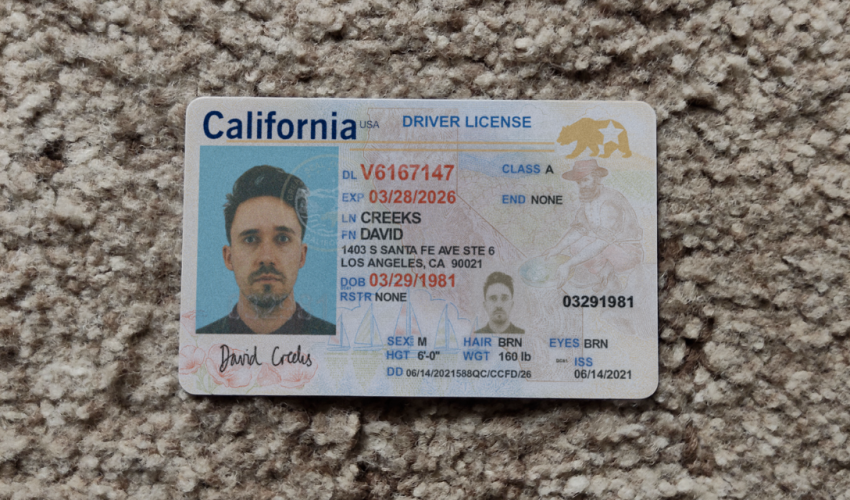(Cover photo by @josephfcox)
The topic of AI-generated fake IDs has been covered by various news outlets and tech websites, highlighting a concerning trend in digital fraud and identity theft. A notable platform involved in this practice is “OnlyFake,” which is reported to utilize artificial intelligence, specifically neural networks, to create highly realistic fake IDs. These IDs pose significant risks as they could potentially be used to commit fraud, launder money, or bypass security and verification processes across various platforms.
According to IDScan.net, in February 2024, the dark web app OnlyFake garnered attention for its ability to produce fake ID images that might fool remote identity verification tools. This development is particularly alarming for sites that require only a photo ID for registration, as it opens up avenues for misuse under false identities. The site’s operation was tested, revealing that while AI requires specific prompts and training to produce the desired outcomes, the results from OnlyFake were visually far from being passable for legitimate IDs, let alone capable of bypassing scanners designed to detect fake documents. Further investigation led to the discovery of a Telegram channel where fraudsters discussed the creation and distribution of these AI-generated fake IDs, with links to other sites like Passport Cloud that offer user-friendly interfaces for generating fake documents.
However, it’s important to note that while these AI-generated images may look visually convincing, they lack the physical features necessary for passing in-person verification processes, such as ultraviolet or infrared markings. Therefore, their utility is primarily limited to online scenarios where only an image of an ID is required. This limitation suggests that organizations employing robust document verification methods, including live document capture or liveness checks, are less likely to be compromised by such fraudulent IDs.
These developments underscore the ongoing challenges and risks posed by advancements in AI technology, especially in the creation of fake digital documents. They highlight the need for continued vigilance and advancement in security and verification technologies to counteract these emerging threats.
To protect yourself from the type of fraud associated with AI-generated fake IDs and similar digital identity theft, consider implementing the following measures:
- Be Cautious with Personal Information: Limit the amount of personal information you share online, especially on social media platforms. Fraudsters can use this information to create more convincing fake IDs or to answer security questions that protect your accounts.
- Use Complex Passwords: Employ strong, unique passwords for each of your online accounts. Consider using a password manager to generate and store complex passwords, making it harder for attackers to gain unauthorized access.
- Enable Two-Factor Authentication (2FA): Wherever possible, enable 2FA on your online accounts. This adds an extra layer of security by requiring a second form of verification (like a code sent to your phone) in addition to your password.
- Monitor Your Financial Accounts Regularly: Check your bank and credit card statements frequently for any unauthorized transactions. Early detection of fraudulent activity can minimize damage and facilitate quicker resolution with your financial institution.
- Be Wary of Phishing Attempts: Learn to recognize phishing emails, texts, or phone calls that attempt to trick you into providing personal information or login credentials. Never click on suspicious links or attachments from unknown sources.
- Secure Your Mobile Devices: Use biometric locks (fingerprint or facial recognition) and passcodes to protect your smartphones and tablets. This can prevent unauthorized access to your information if your device is lost or stolen.
- Use Security Software: Install reputable antivirus and anti-malware software on your devices, and keep them updated to protect against the latest threats.
- Be Careful with Public Wi-Fi: Avoid conducting sensitive transactions, like online banking or shopping, while connected to public Wi-Fi networks. Use a virtual private network (VPN) to encrypt your internet connection in public places.
- Educate Yourself: Stay informed about the latest fraud trends and cybersecurity practices. Awareness is a key defense mechanism against becoming a victim of identity theft or fraud.
- Report Suspicious Activity: If you suspect that you’ve been a victim of identity theft or fraud, report it immediately to the appropriate authorities, such as your bank, the Federal Trade Commission (FTC) in the U.S., or the local equivalent in your country. This can help mitigate the damage and potentially alert others to the scam.
By taking these proactive steps, you can significantly reduce your risk of falling victim to fraud involving AI-generated fake IDs and other forms of digital identity theft.
Conclusion
The emergence of AI-generated fake IDs presents a complex challenge for cybersecurity, identity verification, and fraud prevention efforts. While these technologies offer sophisticated means to create fake documents, they also prompt a critical examination of current security measures and the need for ongoing innovation in authentication processes.
